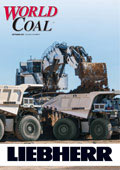Editorial comment
“The resources boom is over”: this was the recent judgement of Martin Ferguson, Australian resources and energy minister, after BHP Billiton announced that it was scaling back planned investment in response to the weakened commodity prices and a 35% fall in H2 2012 profits. For the chop are the Olympic Park copper mine expansion project and the Western Australia Iron Ore dual harbour strategy, which would have cost a combined US$ 40 billion.
Register for free »
Get started now for absolutely FREE, no credit card required.
The challenges are well known. China is heading towards its lowest annual growth rate in over a decade, leaving commodities prices to languish in the doldrums. The continuing eurozone crisis and a still-weak recovery in the US keep the financial markets jittery. Within the mining industry, companies have to come to terms with the rising cost of labour, logistics and regulation, increasing political interference and fractious relations with trade unions. Mines have been closed; more may follow.
Listening to such news, it is easy to be pessimistic. But look beyond the immediate headlines and Fergusan’s eagerness to write the resource industry’s obituary seems premature. BHP Billiton will still invest US$ 22.8 billion in the year ahead, including projects to increase coal production by 50%. Meanwhile, Rio Tinto has stuck to its planned investment of US$ 16 billion and Xstrata is still expected to invest US$ 7.2 billion.
Despite the challenges today, investment is continuing – albeit more slowly – because the fundamentals of longer-term growth remain positive. As BHP Billiton noted when announcing its annual results: “in the medium term we expect supportive economic policy and a broad growth bias, particularly in China, to lead to measured improvement in the external environment beginning in H1 of the 2013 financial year.” There is light at the end of the tunnel: the industry will not be down forever.
On a different note, the mining industry will head to Las Vegas this month for a record-breaking MINExpo INTERNATIONAL® 2012. We celebrate this with over 40 pages of show coverage. It all starts on page 76 with our guide to the city and the show, while from page 80 we profile a number of coal industry exhibitors. We conclude by asking five companies to look back at their journey since the last show in 2008 and onto the next four years.
It’s not all about Las Vegas, however. A regional report on the US and technical feature on opencast mining complete the issue and make it – at 160 pages – the biggest issue of World Coal ever. I hope you enjoy it!


